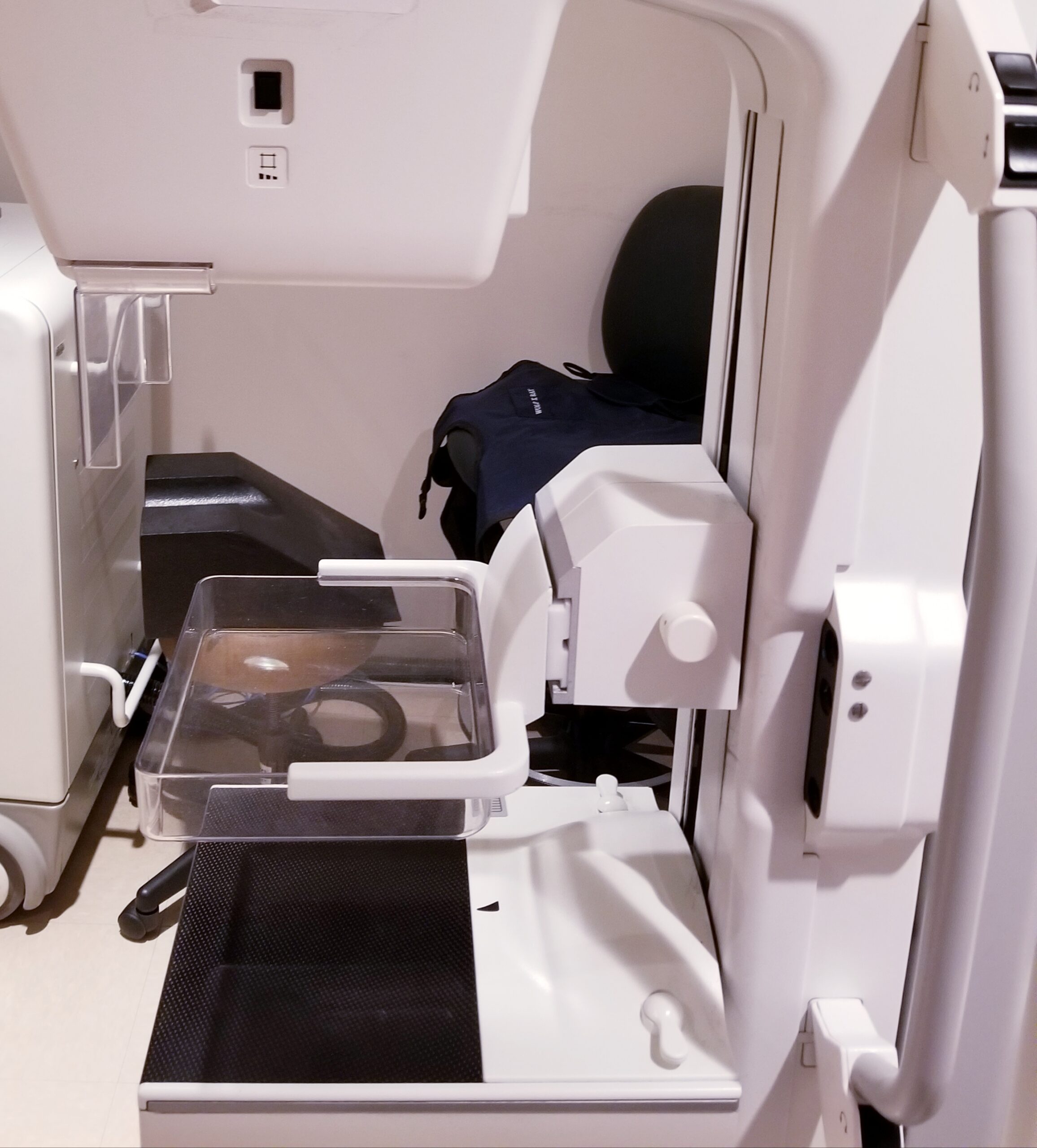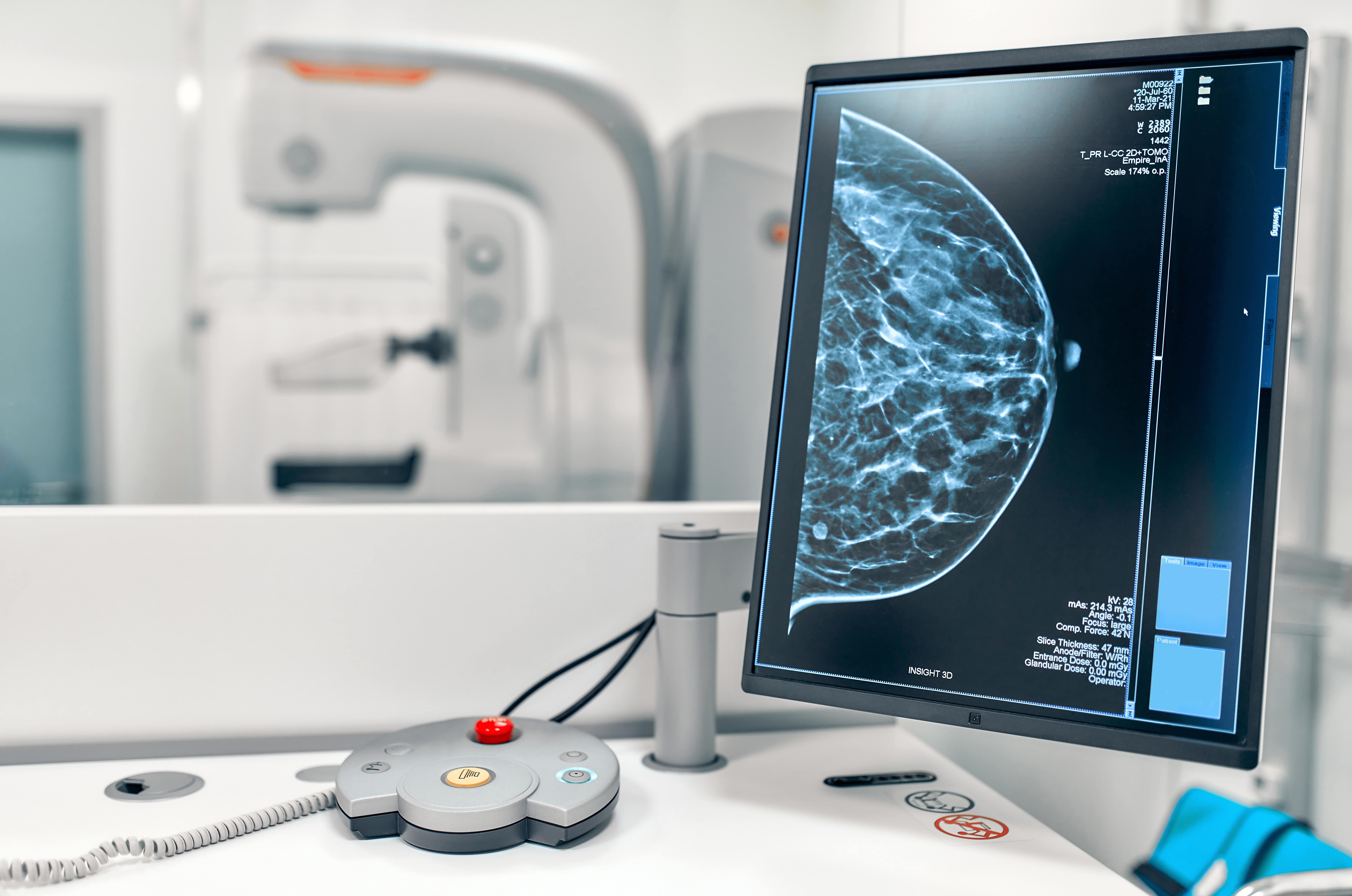Regular screenings play a vital role in safeguarding women’s breast health, but there remains a multitude of questions surrounding the mammogram. As one of the most effective methods for early detection of breast cancer, routine mammography has proven instrumental in saving countless lives.
Here, we answer the most frequently asked questions and provide valuable information to help alleviate any concerns, ensuring you approach the exam with peace of mind.
What is a Mammogram?
Mammogram is a specialized medical imaging test that uses low-dose X-rays to visualize the inside of the breast. It is used to detect benign tumors, cysts, and signs of breast cancer in the early stages.
This test has been used for over 30 years, and over the years both the technique and the accuracy of the results have improved. Today’s mammogram equipment uses low doses of radiation that pose no danger to the body and produces high-quality studies.
While a mammogram is used to detect signs of cancer, it is not a definitive diagnostic test. If the results indicate suspicion of cancer, a biopsy should be performed to analyze the tissue and confirm whether the cells are abnormal.
Types of Mammograms
From the point of view of equipment and technology, there are two types of mammograms: conventional and digital mammograms. Conventional mammograms store the images on a radiographic plate, while digital mammograms store them in a computerized file. In addition, in a digital mammogram, the images can be two-dimensional or three-dimensional, depending on whether the computerized reconstruction of the breast is performed in two or three views.
In terms of medical purpose, mammograms can be classified into two types: screening mammograms and diagnostic mammograms. Screening mammograms are typically performed as a regular check-up for women above a certain age or with certain risk factors, even if they don’t exhibit any signs of breast cancer. Diagnostic mammograms, however, are recommended when there are observable changes in the breast, such as lumps, pain, nipple discharge, or other worrisome symptoms, to investigate the possibility of cancer.
At What Age Should You Get a Mammogram?
The age at which you should start getting your screening exams and how often you should get a mammogram depends on several factors, such as whether you have a family history of breast cancer or if you have any warning signs.
The American College of Radiology (ACR) recommends that women between the ages of 40 and 44 get their first screening mammogram and continue to do so annually, especially if they have a family history of breast cancer.
Women between the ages of 45 and 54 should have mammograms every year.
Between the ages of 55 and 74, women can opt for mammograms every two years.
After this age, screening is recommended every two years for women who are in good health and with a life expectancy of 10 years or more.
How Long Does a Mammogram Take?
The mammogram procedure typically lasts a few minutes, while the entire appointment may take approximately 30 minutes. Initially, the mammographer will inquire about any breast changes or lumps you may have noticed, as well as your family medical history. If you have any inquiries, feel free to ask.
How to Prepare for a Mammogram?
We know that these tests can cause anxiety, so we advise you not to anticipate any alarming results. We recommend you maintain a calm mindset, and if you have any doubts or fears, you can always discuss them with your doctor.
Choose a date for your appointment when your breasts are less sensitive, typically a few days after your menstrual period.
If you have undergone previous breast imaging exams, remember to bring them along so that the radiologist can compare the current results with the past ones and identify any new findings.
Do not use deodorants, creams, or powders before the mammogram, as these may alter the results.
Do Mammograms Hurt?
It’s completely understandable to have worries about potential pain during a mammogram. However, please know that any discomfort you might experience is usually mild. The level of discomfort can differ depending on factors like your breast size, the timing of your menstrual cycle, and the expertise of the mammographer performing the exam. If you’ve had any previous discomfort, we encourage you to share this information with the radiologist. They will take it into consideration and do their best to make you as comfortable as possible.
Mammogram Results
Following the examination, the radiologist will carefully analyze the images and compare them with any previous exams you may have had. Based on their observations, they will generate a report that assigns a category ranging from 0 to 6, providing classification for the type of finding.
Category 0: The X-ray did not yield a clear result and further evaluation is needed.
Category 1: No abnormality or malignancy was detected.
Category 2: Benign findings such as intramammary nodes or benign calcifications were identified. There is no suspicion of malignancy.
Category 3: Probably benign findings were detected but require follow-up within 6 months to detect any abnormal changes.
Category 4: A suspicious abnormality was found that may require a biopsy.
Category 5: The examination yielded a high suspicion of malignancy. A biopsy will be performed to confirm the diagnosis.
Category 6: This means that a biopsy has previously been performed that has already proven the diagnosis of cancer.
Embracing routine mammograms as part of your preventative care plays a pivotal role in safeguarding your breast health. By prioritizing these screenings, you take proactive steps toward early detection and better treatment outcomes.
At DFW Family Clinic, our doctors are dedicated to providing a supportive environment during your mammogram. Remember, prevention is key, so schedule your mammogram with us today and prioritize your ongoing well-being. You can also schedule your Well Woman Exam for a comprehensive look at your health status.










